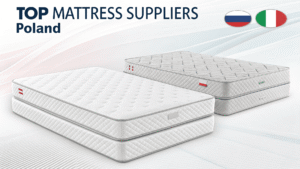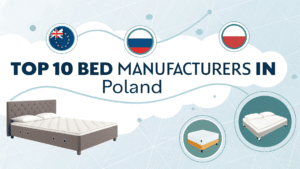LED bed frames are gaining popularity in global markets, but many furniture retailers still hesitate due to safety concerns like overheating, certification, or voltage issues.
Yes, LED beds are safe when designed with low-voltage USB systems, sealed components, and certified wiring that prevents overheating, short circuits, or fire hazards.
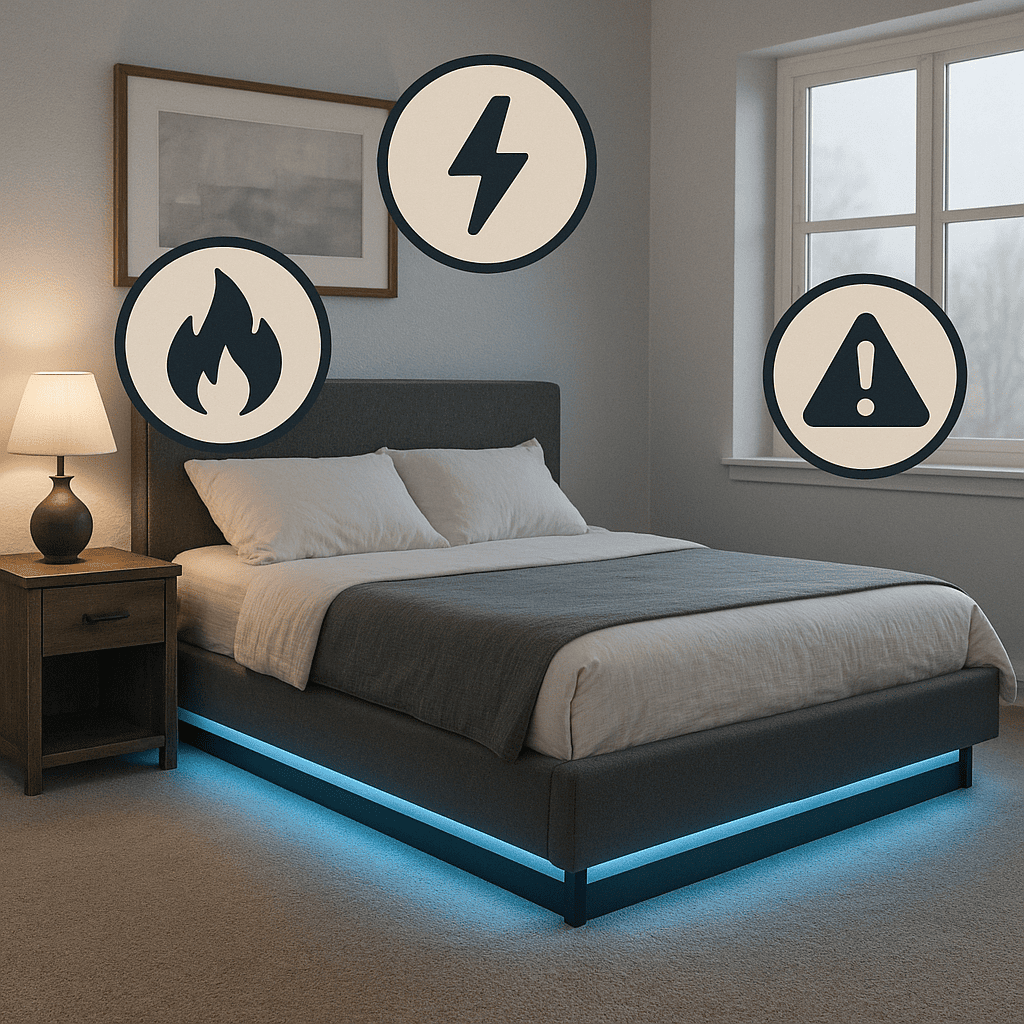
Despite the rise in popularity of smart furniture, many retailers still struggle to find models that meet both safety standards and logistical needs. Let’s explore the most common safety concerns and how to resolve them effectively.
Are LED beds a fire hazard?
Retailers often ask whether LED beds1 can overheat or pose a fire risk, especially during long-term display or after repeated use.
No, LED beds are not a fire hazard2 when using 5V or 12V low-voltage lighting systems with proper insulation and fire-safe materials.
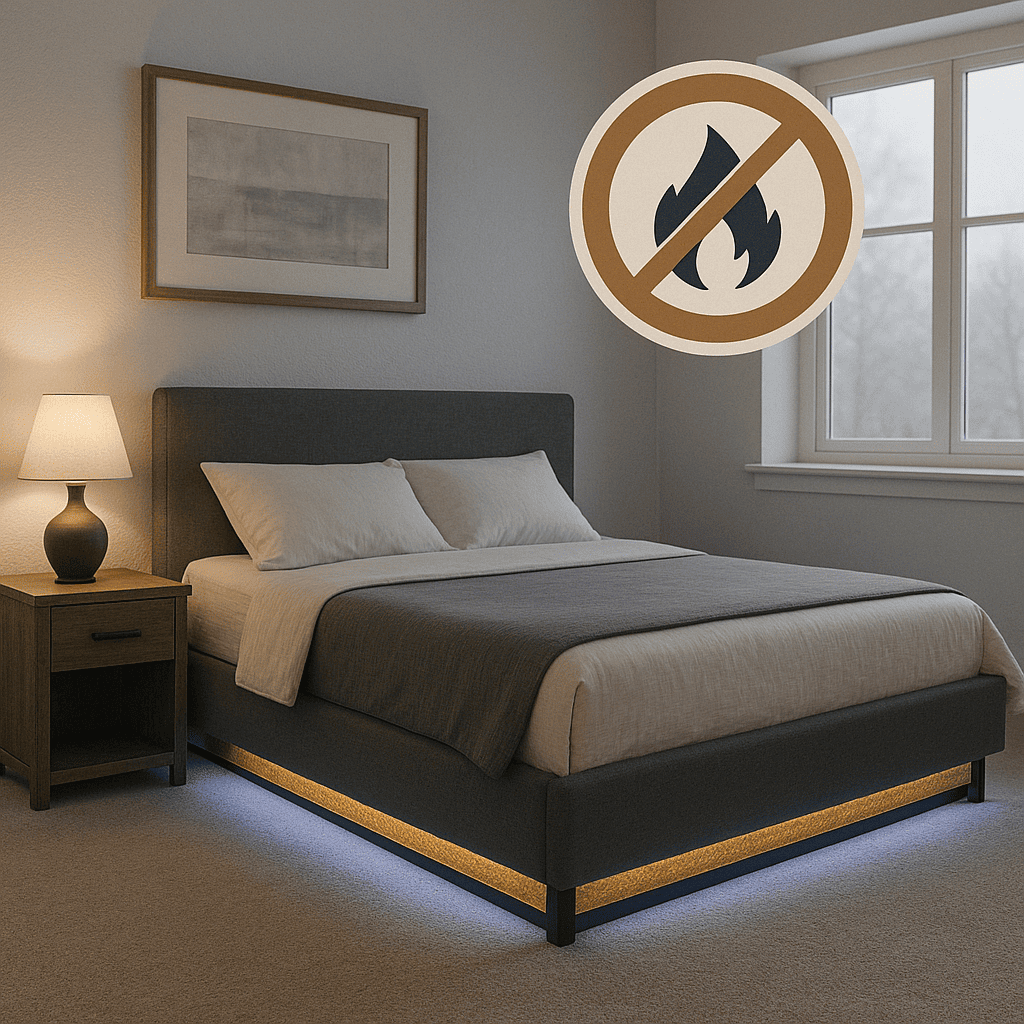
Fire prevention and voltage control
Fire hazards typically come from two issues: poor wiring and high voltage. At the factory level, modern LED beds1 avoid these issues by embedding the LED strips inside PVC fireproof channels3 and isolating them from the wooden or metal frame. This eliminates heat conduction risks. The LEDs operate at low voltage—either 5V or 12V—much lower than the danger threshold for human contact.
Most systems are USB-powered, which means there's no direct connection to household high-voltage outlets. This makes them ideal for retail floor models that need long hours of display lighting. For wholesalers, this setup reduces the chance of warranty claims or liability from safety issues.
Retailers benefit from the zero-overheating risk, minimal energy use, and full compatibility with showroom safety protocols4.
What certifications should LED beds have for export?
International buyers often worry about clearing customs or meeting local electrical safety regulations.
LED beds should carry certifications like SAA for Australia, CE and RoHS for the EU, and UKCA for the United Kingdom.
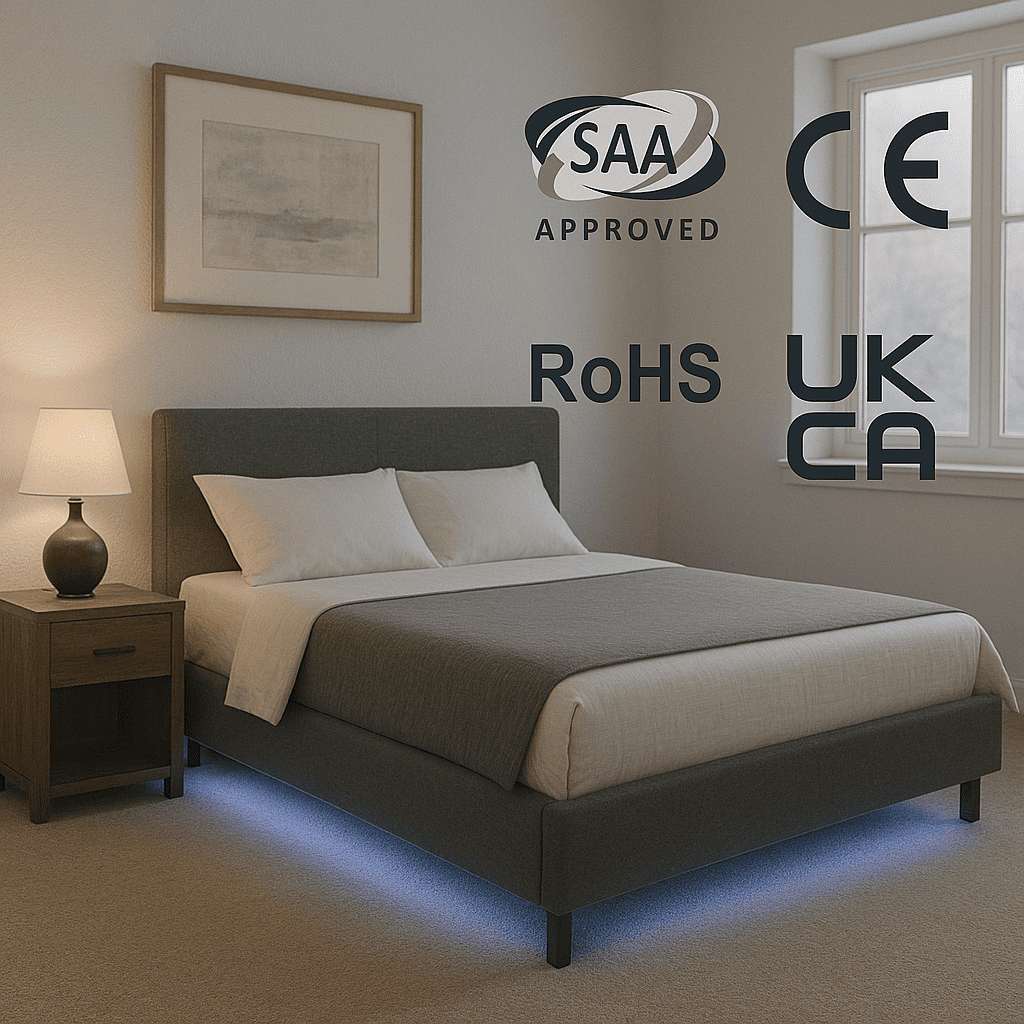
What each certificate means for your business
Certification ensures that your LED bed product can legally enter and be sold in your target market. For example:
| Market | Required Certification |
|---|---|
| Australia | SAA, RCM |
| European Union | CE, EMC, RoHS |
| UK | UKCA |
| USA/Canada | UL (optional but beneficial) |
For bulk orders, it's essential that each product type is batch-tested. Factories like DIKAPABED prepare full documentation in advance, including third-party lab reports. This saves retailers both time and money, as they don’t need to source certification independently. All documents can be included with the shipment, so distributors and customs agents can verify compliance easily.
Is it safe to install LED strips on metal frames?
Some importers worry that LED strips applied to metal components may lead to electric shocks or short circuits.
Yes, it is safe to install LED strips on metal frames5 when the strips are properly insulated using PVC sleeves or EVA padding.
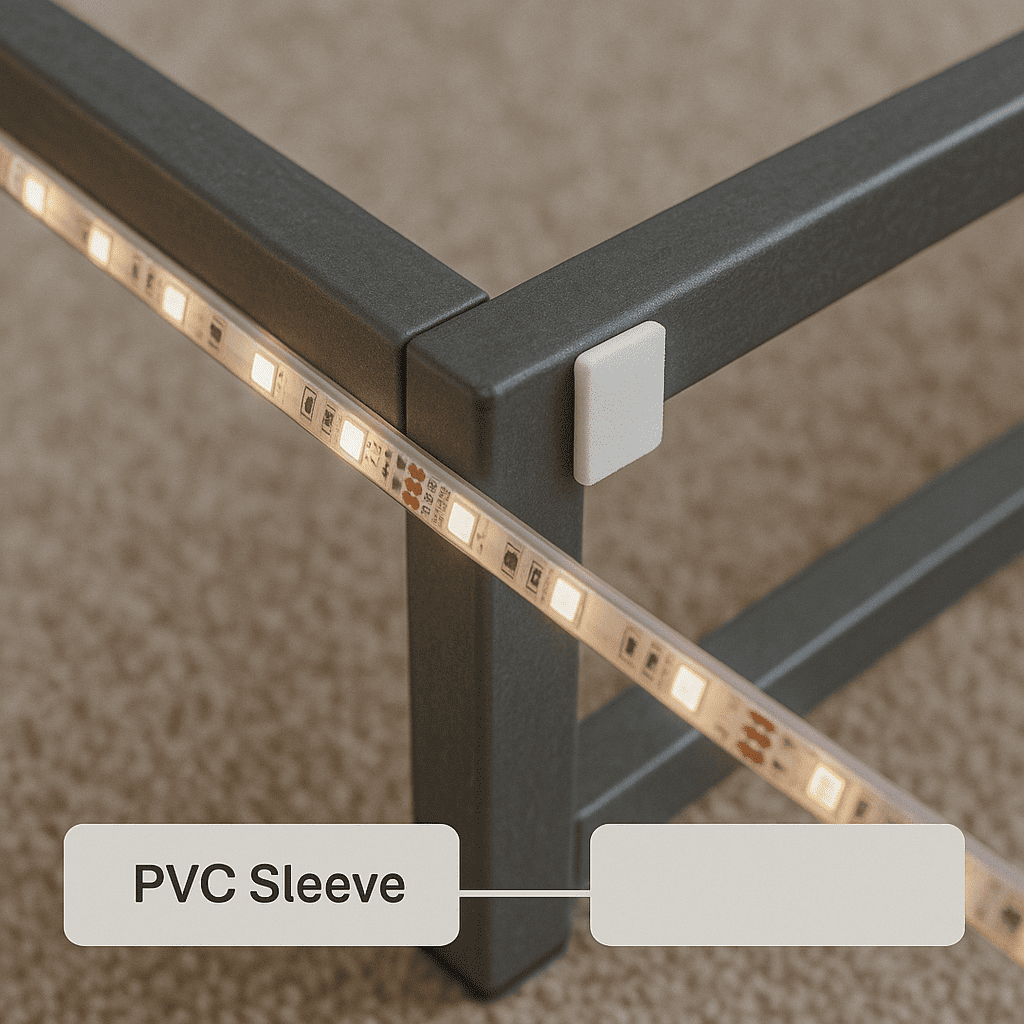
How structural design prevents electrical contact
Direct contact between electrical components and metal can be dangerous if not managed. To prevent this, LED beds are designed with dedicated LED channels or lighting recesses. These are typically separated from the metal structure by non-conductive housing.
The wires are not exposed. Instead, they are pre-assembled and secured inside routed paths or guides. This keeps them protected during shipping and makes installation easier for the end user.
This system has three benefits:
- Reduces complaints about electrical safety
- Eliminates the need for an electrician during setup
- Makes self-assembly easy, even for first-time users
Retailers benefit from lower return rates and fewer installation-related support tickets.
Do LED beds use low-voltage lighting?
Some buyers ask whether the voltage system is safe for end users or if installation requires a licensed technician.
Yes, LED beds use low-voltage systems—typically 5V or 12V—making them safe, energy-efficient, and easy to install.
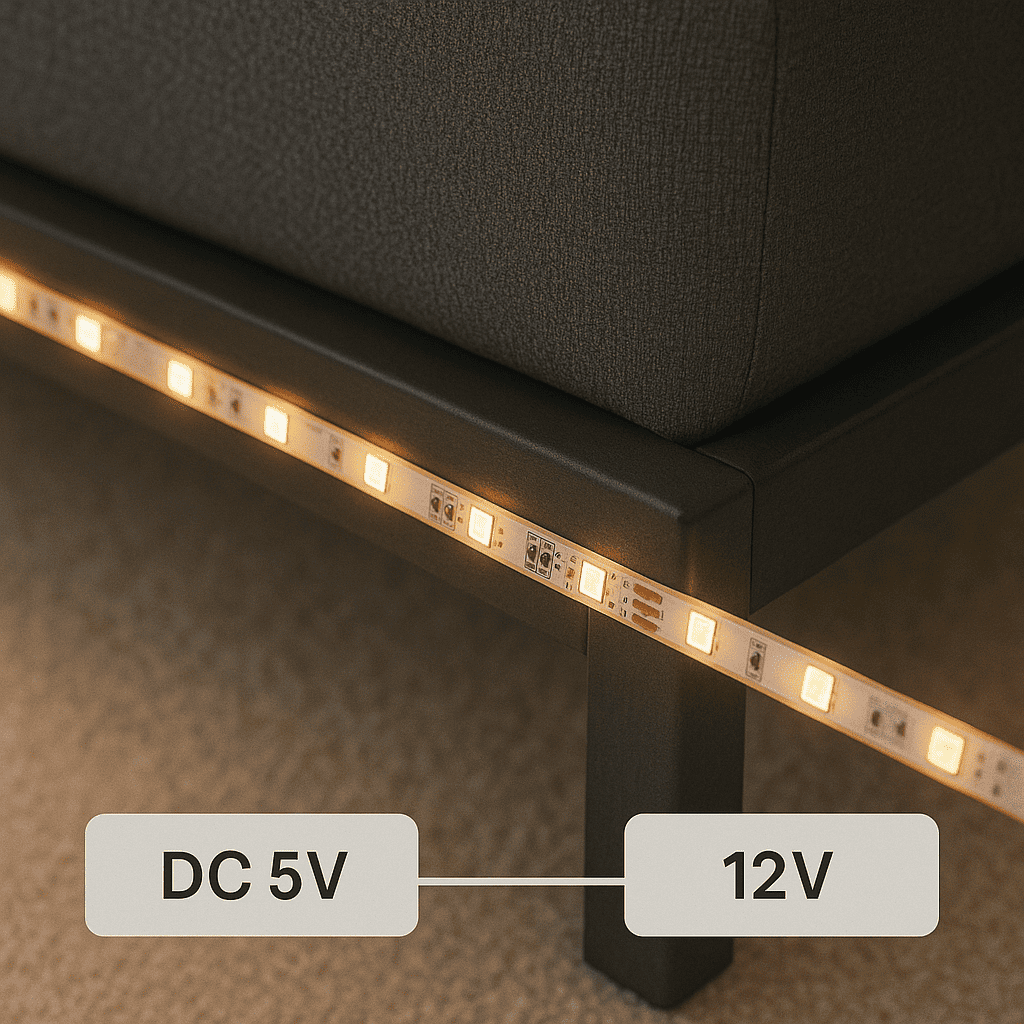
Why low-voltage is preferred for international buyers
Low-voltage systems significantly lower the risk of shock or fire. Because most LED beds use USB-powered strips, they don’t require plug adapters or specific socket types. This makes them suitable for universal markets, especially for online sales across regions.
USB-powered LED strips can be connected to power banks, TVs, or standard adapters. This flexibility means customers can start using the bed lighting immediately without needing additional tools or installers.
For retailers, this means reduced support overhead and greater compatibility across global SKUs.
What safety standards apply in Australia or EU?
Retailers selling in regulated markets like Australia or the EU need to comply with stricter product safety laws.
Australia requires SAA and RCM certifications, while the EU requires CE, EMC, and RoHS compliance for LED lighting products.
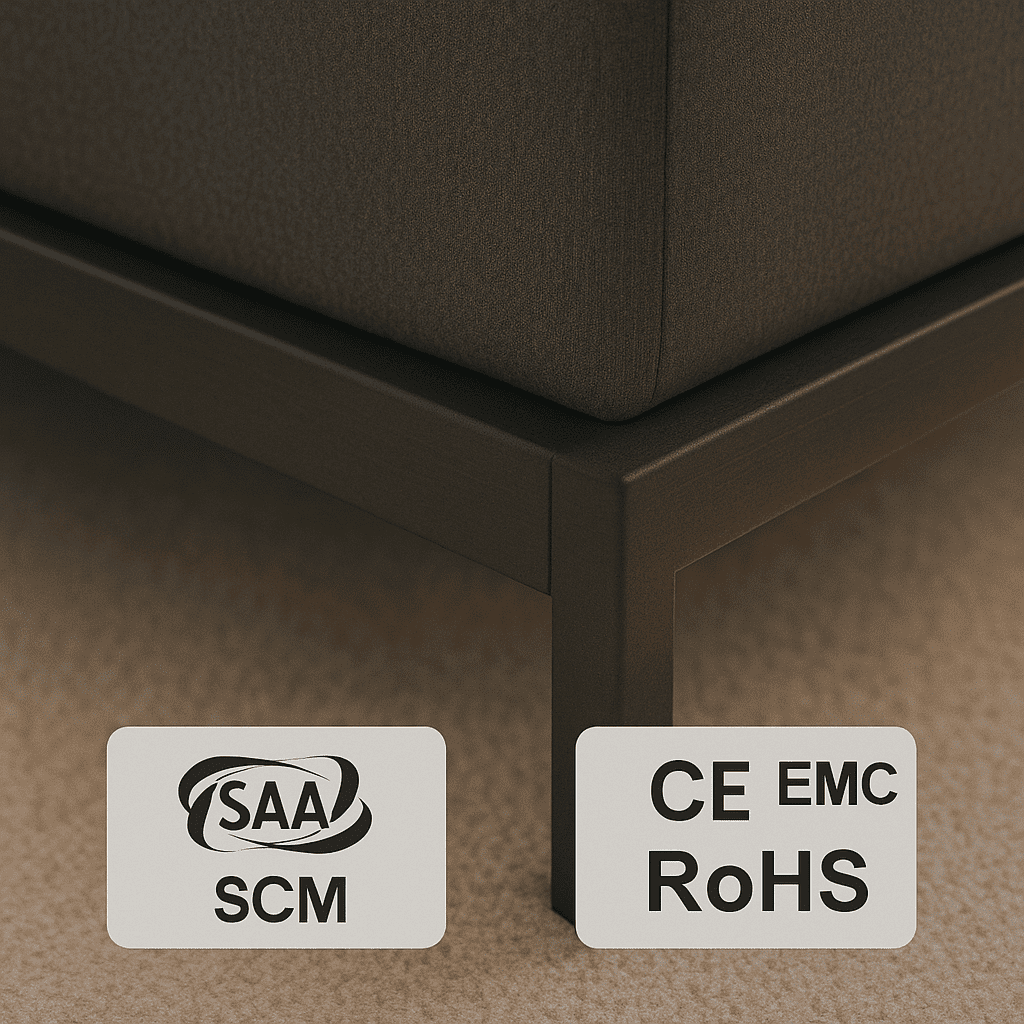
Pre-certification speeds up sales channels
Failure to meet these standards can lead to customs delays or sales bans. That's why DIKAPABED includes full documentation and labeling in each export package. For example:
- SAA + RCM certificates for Australia
- CE + EMC + RoHS for EU
- English user manual and labeled boxes for inspection
Labels also include power consumption, wiring schematic, and operating voltage for distributor review.
Retailers can go live faster with online listings and don’t need to delay launch for testing or documentation. It also helps wholesalers pass audits when supplying to chains or commercial clients.
Can LED bed lights be controlled by app or remote safely?
End users expect smart control, but retailers worry about app reliability or remote confusion, especially with older customers.
Yes, LED bed lights can be safely controlled using infrared remotes, Bluetooth apps, or touch buttons, depending on the configuration.
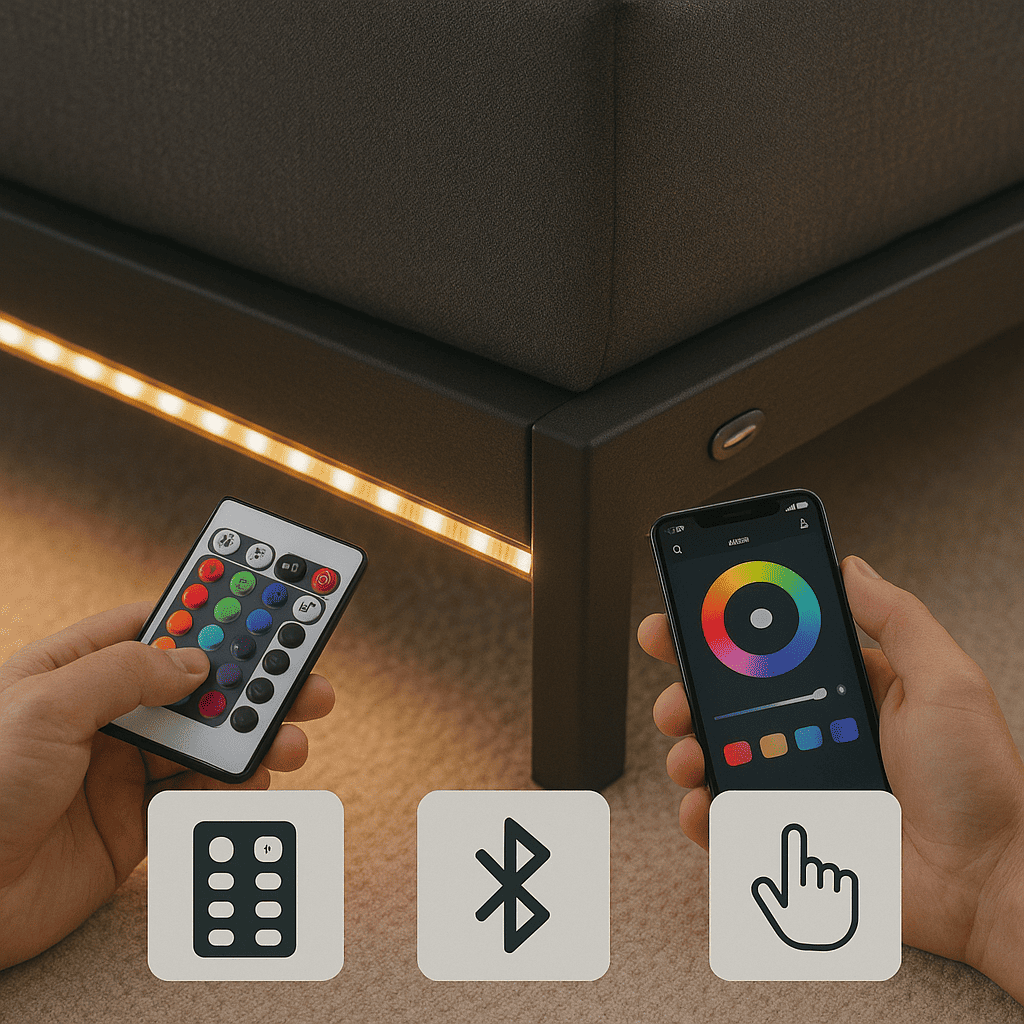
Control options and user safety
Most LED beds today support at least two modes of control:
- Remote control – infrared, with preset modes and dimmers
- Mobile App – Bluetooth-based, with color customization
- Touch Button – simple physical switch for on/off
The controllers operate at low voltage and are physically separated from the LED system. There is no risk of current leakage or overheating. Factories can also provide dual-control options: one remote for color and one for brightness or on/off toggle.
This satisfies different user demographics:
- Older users may prefer remote or touch
- Younger users tend to favor mobile app pairing
Retailers get fewer returns due to “too complex to use” complaints, which improves customer reviews and reduces churn.
Conclusion
LED beds are not only stylish but also fully safe when manufactured and certified correctly, making them ideal for wholesale and retail growth.
-
Explore this link to understand the safety features and benefits of LED beds for your home. ↩ ↩
-
Discover the truth about fire hazards associated with LED beds and how to mitigate risks. ↩
-
Discover how PVC fireproof channels enhance safety in LED bed designs. ↩
-
Discover the safety protocols retailers should follow when displaying LED beds. ↩
-
Learn about the safety measures for installing LED strips on metal frames. ↩


